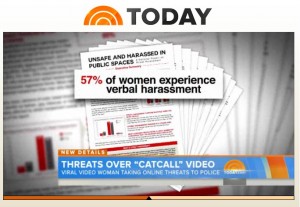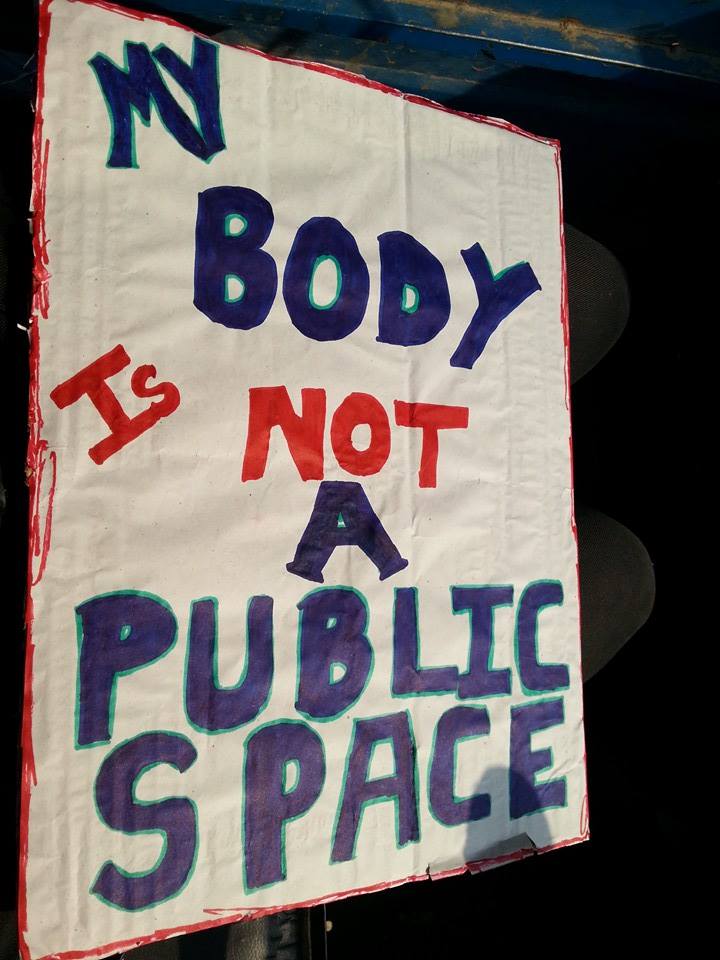This post is from our Safe Public Spaces Team in Nicaragua, with the English translation below the Spanish. The SPSM projects are supported by SSH donors. If you would like to donate to support the 2015 mentees, we would greatly appreciate it!
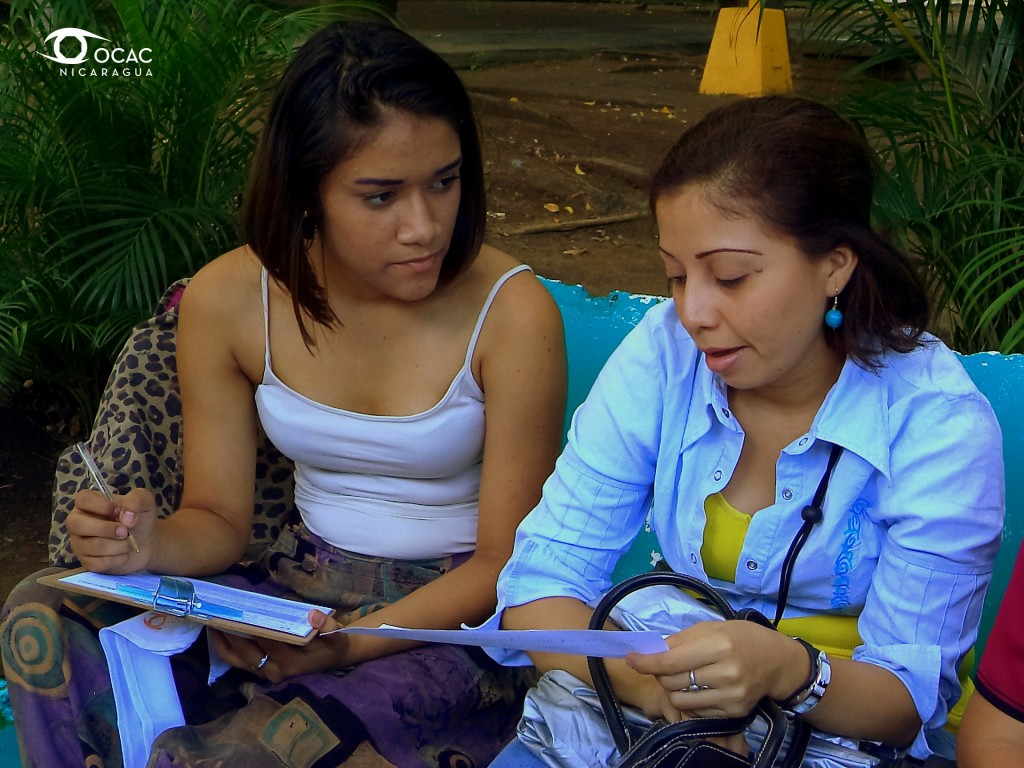 El proyecto de OCAC Nicaragua que dio inicio en Septiembre de 2014 bajo el patrocinio de Stop Street Harassment ha llegado al final de su etapa inicial, por medio de la cual se logró alcanzar a más de novecientas mujeres en la ciudad de Managua, quienes compartieron su tiempo y vivencias con las más de quince encuestadoras voluntarias que apoyaron la iniciativa. Con esta encuesta se alcanzó a conocer testimonios de mujeres de 14 a más de 55 años, quienes experimentan violencia en los espacios que son, en teoría, seguros para todas.
El proyecto de OCAC Nicaragua que dio inicio en Septiembre de 2014 bajo el patrocinio de Stop Street Harassment ha llegado al final de su etapa inicial, por medio de la cual se logró alcanzar a más de novecientas mujeres en la ciudad de Managua, quienes compartieron su tiempo y vivencias con las más de quince encuestadoras voluntarias que apoyaron la iniciativa. Con esta encuesta se alcanzó a conocer testimonios de mujeres de 14 a más de 55 años, quienes experimentan violencia en los espacios que son, en teoría, seguros para todas.
El reconocer los rostros de estas mujeres, con historias que tienen características similares con las del resto, nos ha llevado a la adquisición de un compromiso más sólido y firme con la temática del acoso callejero, ya que no se trata de “piropos”, sino de agresiones que van dañando la integridad de cada una, llenándonos de miedos que limitan nuestro uso pleno de los derechos de libre circulación.
A través de los resultados que nos generó esta primera encuesta realizada en Nicaragua sobre acoso callejero, constatamos la importancia de dar información sobre el tema, no solamente conociendo en qué consiste, sino la forma en la que podemos contrarrestarlo ya que no se trata de una experiencia agradable y bien aceptada.
Cabe destacar que este compromiso no solo lo adquirimos quienes formamos parte del grupo dirigente, sino de las voluntarias comprometidas que posibilitaron la información al llenar cada una de las encuestas; y es aquí donde reconocemos otro logro, pues muchas de las encuestadoras al escuchar las vivencias, reflexionaron sobre la envergadura de la problemática y reconocieron la importancia que tienen no solo las frecuencias y especificaciones de las incidencias, sino el sentir de aquellas que contando sus historias descargaron sentimientos que tenían reprimidos. Esto transformó en todas nosotras la forma de actuar al sentirnos acosadas en las calles, y desde nuestro actuar incidiendo en el comportamiento de otras.
A partir de los resultados obtenidos, encontramos que más del 90% de las mujeres perciben esta problemática como una forma de violencia de género; sin embargo, -según lo que expresaban algunas de ellas- el responder ya sea con gestos o acusaciones públicas trae consigo respuestas violentas o reiterativas de los agresores, que en algunos casos las inhibían y en otros les hacía exponer más fervientemente su inconformidad.
Del mismo modo, reconocer uno de los focos más vulnerables que son las mujeres con las edades comprendidas entre los 16 a 18 años, nos proporciona mayores insumos en cómo trabajar con estas mujeres. Encontramos también que la masturbación, persecución y exhibicionismo de genitales han sido la base de las experiencias que se han catalogado como más fuertes y las que han hecho sentir más vulnerables ante una sociedad que cosifica el sexo femenino.
Asimismo, los resultados de las encuestas solo fueron el primer paso, ya que seguimos trabajando en el análisis de los resultados, porque consideramos necesario realizar un estudio más amplio para posteriormente darlo a conocer a los medios de comunicación e informar que no se trata de una situación culturalmente aceptada por todas, sino que sus formas de expresión tienen consecuencias mucho más profundas. Un ejemplo de esto último es que las mujeres expresaron sentirse con miedo al transitar por las calles, otras aseguraban que vestirse de una u otra forma es lo que ocasiona el irrespeto; así como la impotencia que genera el que la sociedad no sea un medio seguro cuando tiene lugar la incidencia de las acciones que el acoso callejero encierra.
Entre las historias que fuimos testigas, nos impactó la de dos mujeres (en lugares y tiempos distintos, pero como antes mencionábamos con características similares en sus circunstancias) que a los ocho años, mientras iban a comprar a la tienda, un hombre en bicicleta les exhibió sus genitales, mientras les gritaba que ya estaban “buenas”, lo que nos reitera que no existe edad establecida para sufrir acoso callejero.
Este sin duda ha sido un proyecto que nos abre las puertas para empezar a trabajar firmemente en contra del acoso callejero, como una de las primeras iniciativas en Nicaragua de esta naturaleza.
Por Estrella Lovo, Vicepresidenta OCAC, Nicaragua.
In English (Using Google Translate)
Under the patronage of Stop Street Harassment, in September Observatorio Contra el Acoso Callejero, Nicaragua began surveying people about street harassment in the city of Managua. We were able to reach more than 900 women who shared their time and experiences with the more than fifteen volunteer interviewers who supported the initiative. This survey was conducted to learn the experiences of women from ages 14 to over 55 who experience violence in the spaces that are theoretically safe for all.
Recognizing the faces of these women, with stories that have similar characteristics with the rest, has led to the acquisition of a more solid and firm commitment to the issue of street harassment. These are not “compliments” but attacks that are damaging the integrity of each, filling each with fears that limit their full use and right to move in public spaces.
Through the results generated by this first survey in Nicaragua on street harassment, we note the importance of providing information about not only knowing what it is, but the way in which we can counter it as there is a experience pleasant and well accepted.
We found that over 90% of women perceive this problem as a form of gender violence; however, they find that responding with either with gestures or public accusations brings violent or repetitive responses from aggressors, which inhibited in some cases and in others made them more earnestly expose their dissatisfaction.
Similarly, recognizing one of the most vulnerable spots are the women aged 16-18 years gives us more input on how to work with these women. We also found that masturbation, exhibitionism persecution and genitals have been the basis of the experiences that have been cataloged as stronger and have made us feel more vulnerable to a society that objectifies the female sex.
Also, the survey results were just the first step as we continue working on the analysis of the results, because we consider necessary to conduct a larger study to subsequently make it known to the media and report that there is a situation culturally accepted by all, but their forms of expression have much deeper consequences. An example of this is that women reported feeling afraid to walk the streets, others claimed that dress in one way or another is causing disrespect; and impotence generated by that society is not a secure medium where the impact of the actions that encloses street harassment occurs.
Among the stories we have reviewed, we were struck that two women in different places and different times both said when they were around eight years, while going to the store, encountered a a man cycling who exhibited his genitals while shouting that they were already “good”, which reiterates to us that street harassment begins at a young age.
Not only did we collect stories but we as volunteers had an opportunity to reflect on the scale of the problem and recognized the importance of not only the frequencies and specifications of incidents, but the feelings of those who tell their stories — for many their feelings were repressed. This helped us all think about how to act when we feel harassed in the streets, and from our actions we realize we can influence the behavior of others.
This has certainly been a project that opens the door to start work firmly against street harassment, as one of the first initiatives of this nature in Nicaragua.
By Star Lovo, Vice OCAC, Nicaragua.

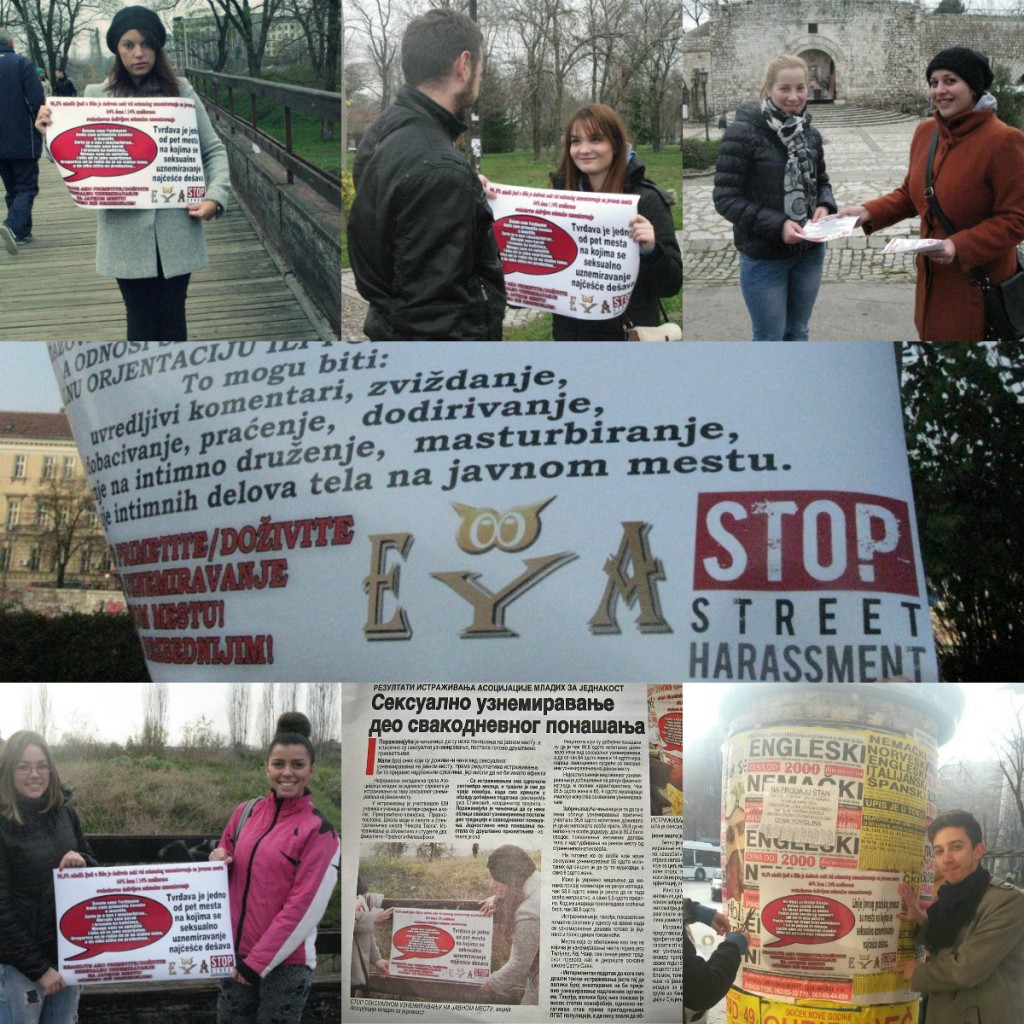
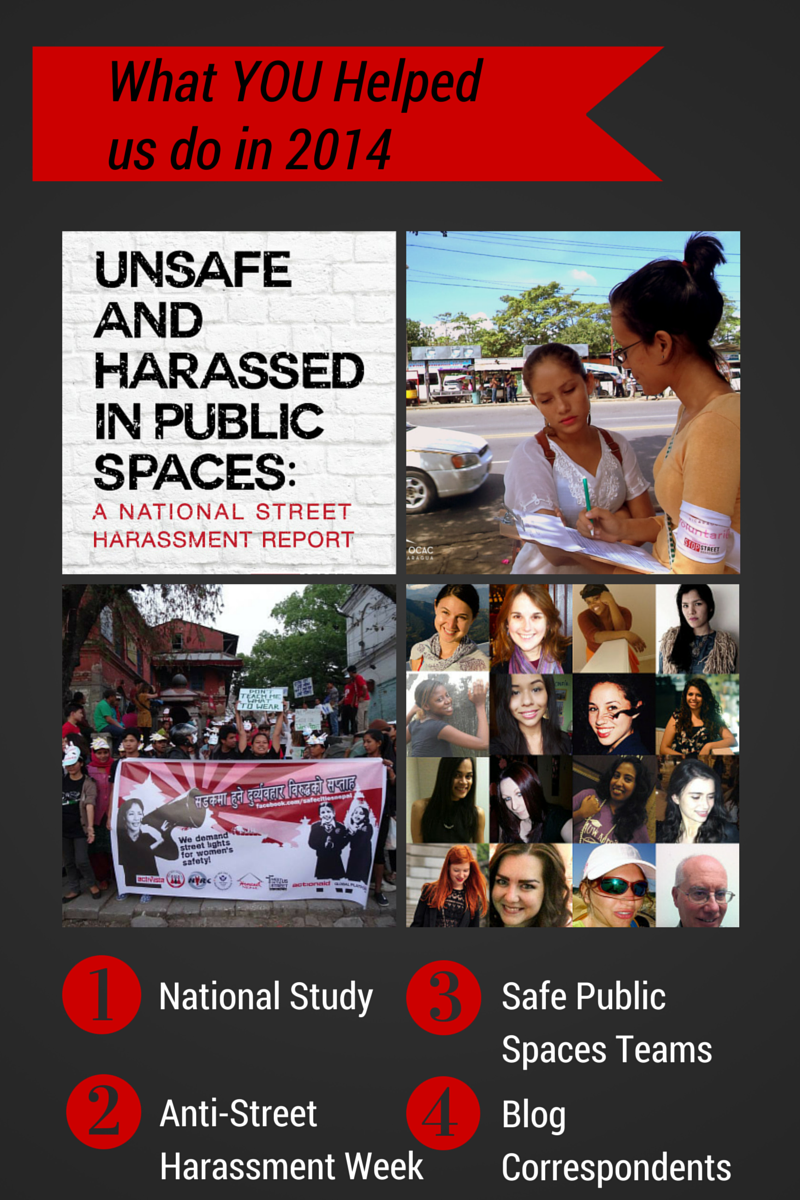
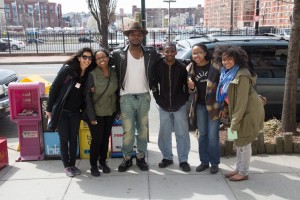 SSH board member Layla and volunteers in D.C. for sidewalk chalking
SSH board member Layla and volunteers in D.C. for sidewalk chalking SSH board member Laura in Nebraska for #16days of activism action on campus
SSH board member Laura in Nebraska for #16days of activism action on campus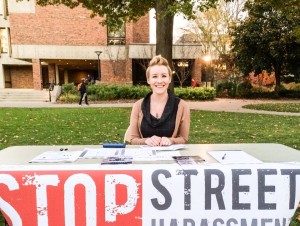 SSH board member Lindsey in Minnesota tabling after her talk at a campus
SSH board member Lindsey in Minnesota tabling after her talk at a campus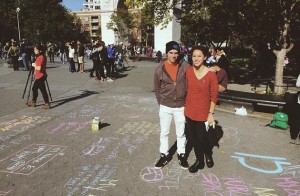 SSH volunt
SSH volunt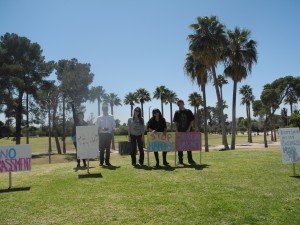 I joined SSH board member Manuel in Arizona for art action with high schoolers
I joined SSH board member Manuel in Arizona for art action with high schoolers
